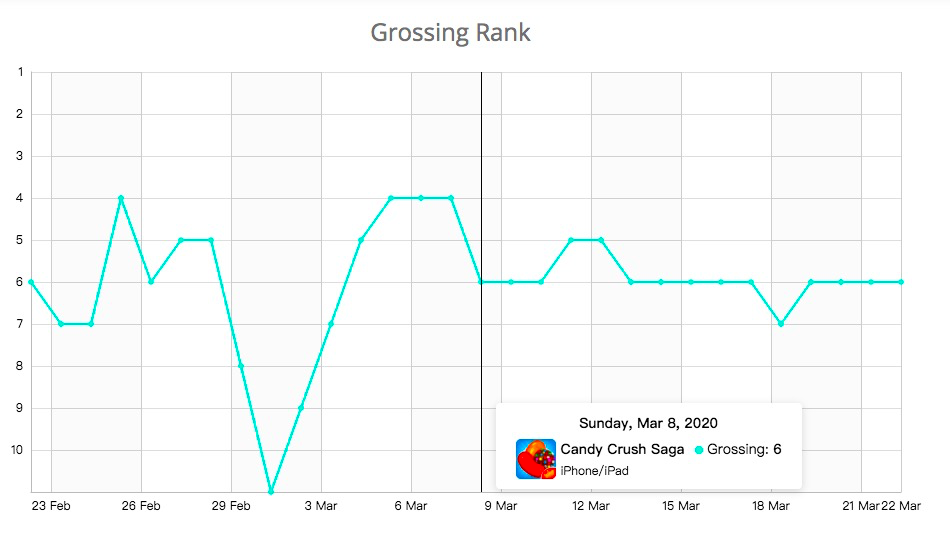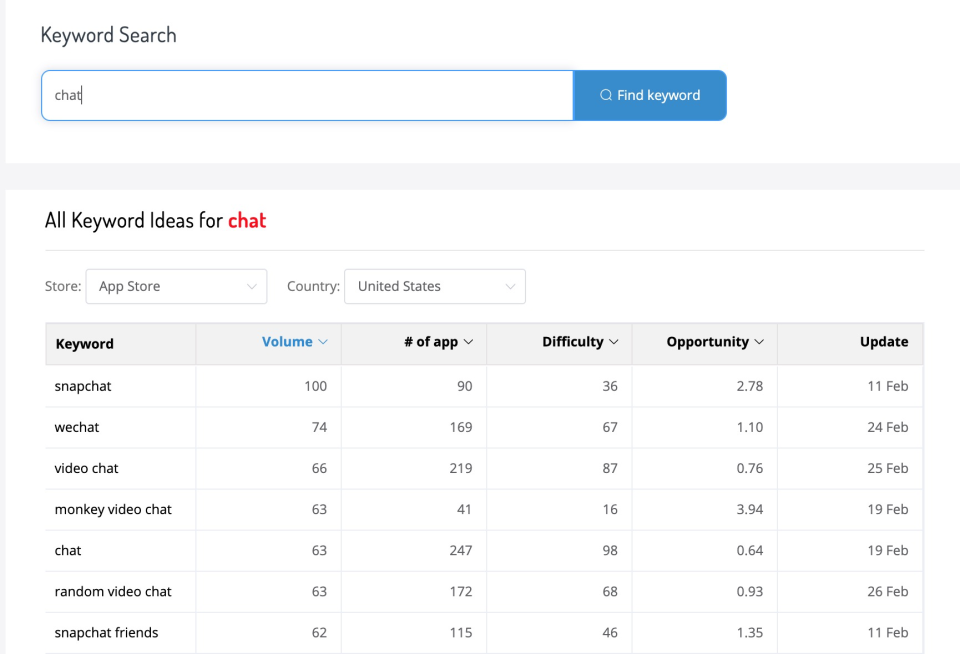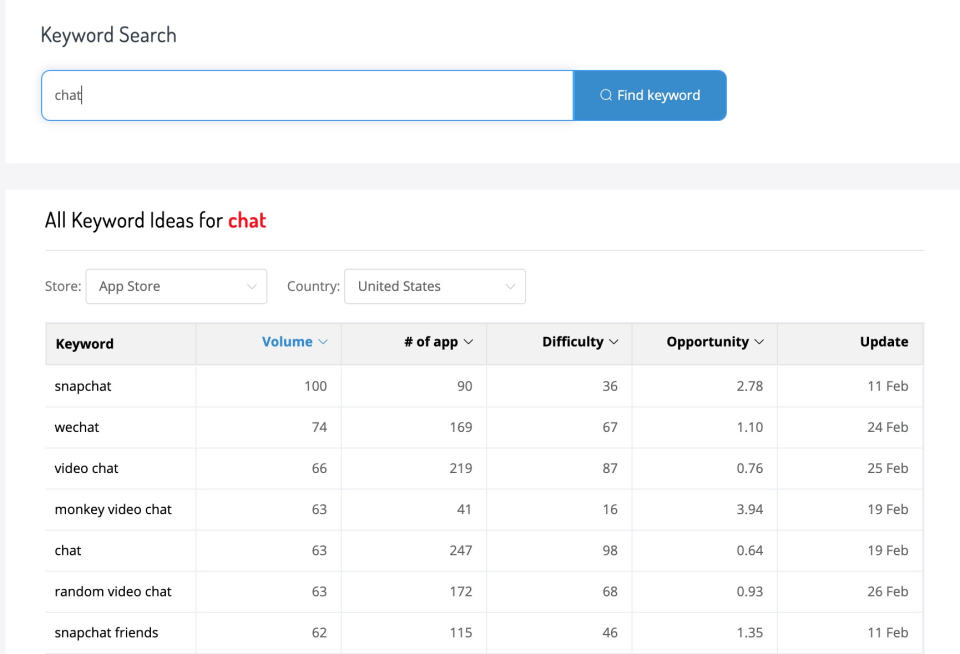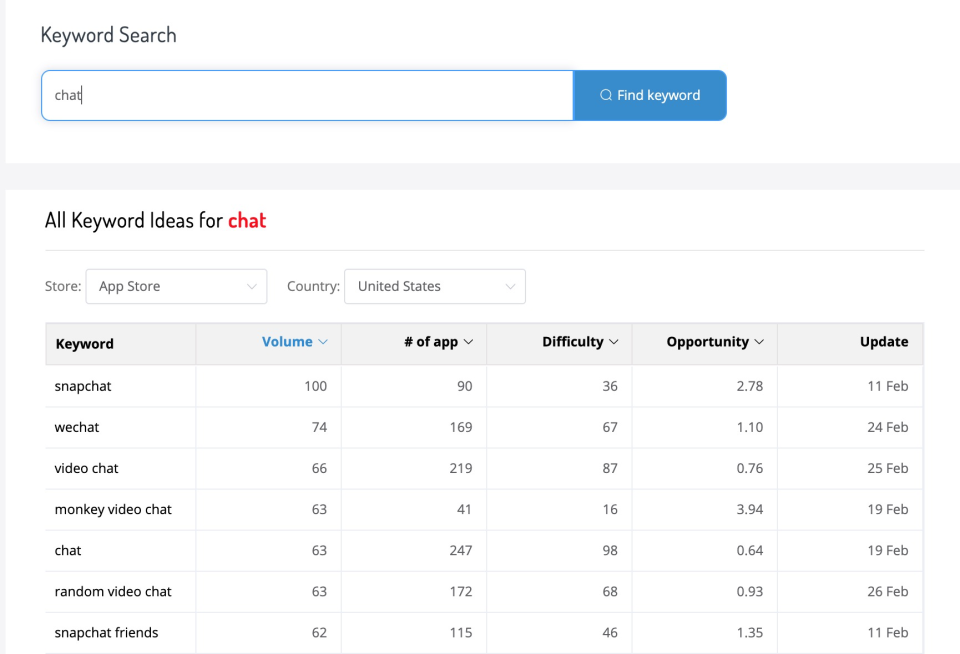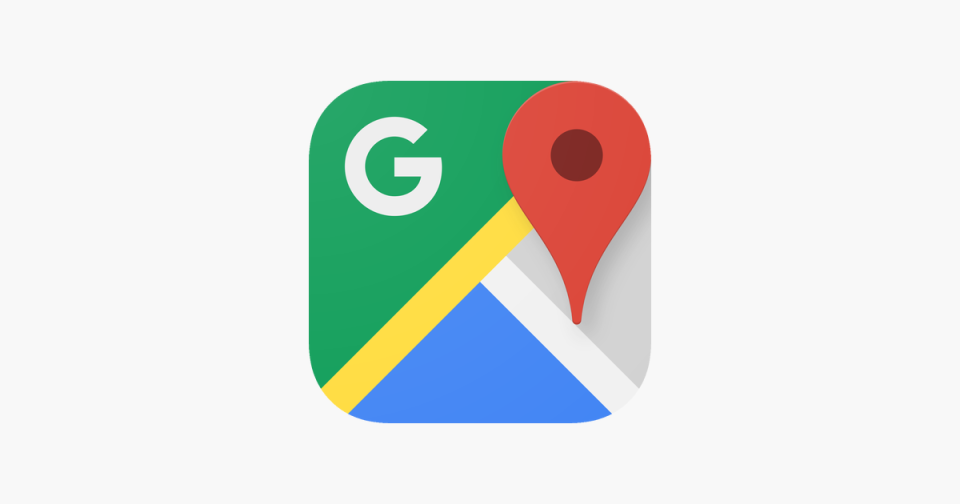App Store Optimization: Incredible Ways To Increase APP Installation
FAQ
- What is App Store Optimization?
App Store Optimization (referred to as ASO, also known as App Store SEO) refers to the process of optimizing applications, with the purpose of improving the ranking of the App in the store, so that the App can be maximized to display (when users browse) and search (when users search ), And ultimately increase the number of App downloads in the app store. - What are the key points for doing App Store Optimization?
I think the key points to do ASO well are the following three points:
(1) Competitor research and keyword research
(2) App store optimization and AB testing
(3) Track the optimization effect and test repeatedly - How should we do App Store Optimization?
Doing App Store optimization requires patience and carefulness. It is a very slow process to see results, and there are many details of store optimization involved, and there are many aspects to be considered. Next, let me tell you how to optimize the Apple App Store? You will reap a lot.
Apple App Store Optimization (iPhone / iPad)
As we all know, App Store Optimization is an important decision for App developers or publishers to increase their visibility in the App Store. It is aimed at improving conversion rates and improving natural installation.
Keep up with the fast-developing app store and the changes in algorithm rules. Today, I specially prepared an optimization method for the Apple App Store for you. I hope it can help you.
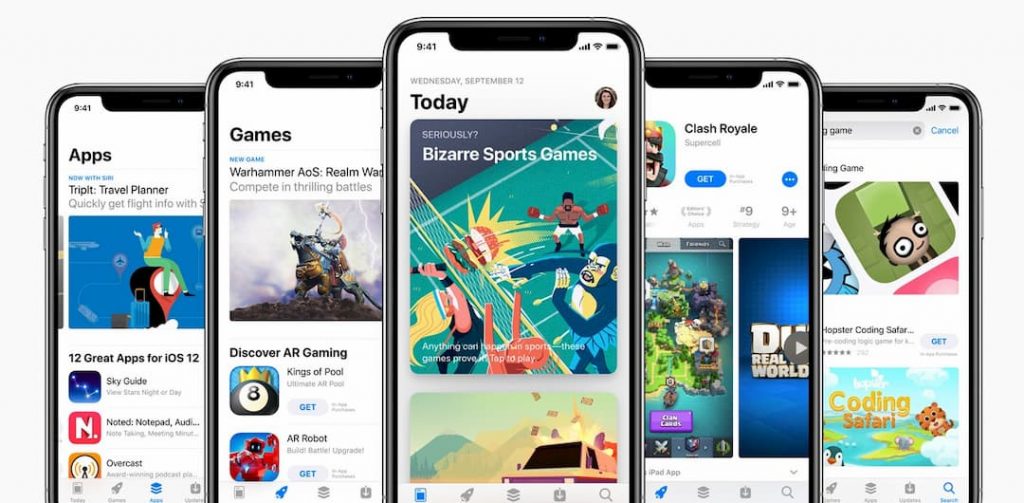
1.Market research and keyword research
Market research mainly includes competitor research and keyword research. Here we mainly talk about keyword research, because it is the first step of APP Store Optimization.
Different application stores have different search algorithms. In order for your app to rank well in search results, you need to consider a few questions when doing keyword research and be fully prepared.

How to choose keywords
The first thing you need to think about certification is to find all the search terms that can be found in your app in the app store. These words can be thought out by yourself or learned from competitors, or Some core keywords are expanded.
There are three main criteria for selecting keywords to help you measure the value of keywords. The first way is to query the average daily search volume of each keyword in the application store, and choose a search volume of 50 ~ 200 is more moderate. The second way is to query the difficulty value of each keyword. It is the most intuitive measure of whether the keyword has value. This difficulty value is directly provided by a third-party tool. In a third way, you need to do a calculation, calculate the ratio of the search volume of keywords to the difficulty, arrange them in descending order, and then select keywords that you think have great potential.
Where to find keywords
Finding keywords is a very important step. We generally search for keywords directly through App keyword monitoring tools. The advantage of using such tools is that they can help you increase efficiency and save time. I used to use App Annie and Sensor Tower directly, but due to the company’s limited budget, I started to choose the free tool AppSimilar as App Store Optimization. I briefly introduce it
(1) Directly check competitors’ keywords through AppSimilar(appsimilar.com).

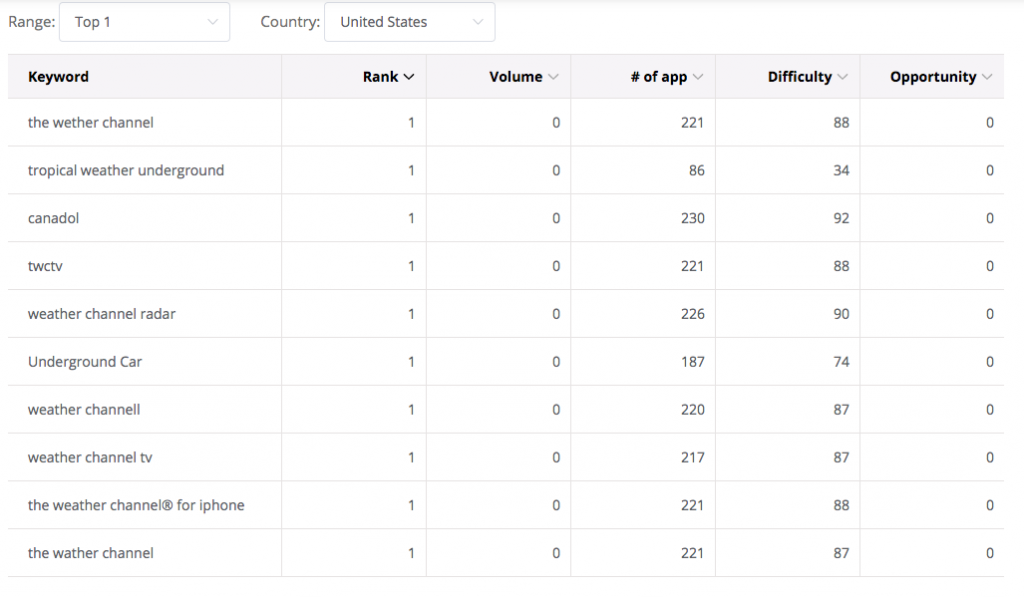
(2) Expand core keywords through AppSimilar to get relevant long-tail keywords
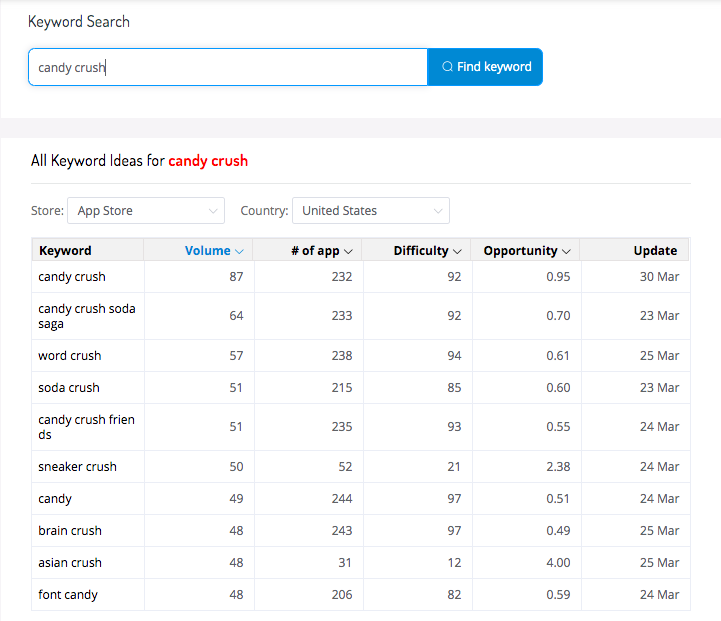
Where to set keywords in the app store
The keyword setting position in the application store is very important. Among them, the core keywords are set in these three places: the name of the application, the theme, and the keyword setting area. The keyword weights in these three places account for a very high proportion, ranking Has the greatest impact. Apple has created a dedicated 100-character field for developers to place keywords they want to rank. When setting keywords, share a few tips:
(1) If you already include singular keywords, do not include plural words.
(2) Separate keywords with commas to remove extra spaces.
(3) The keywords used in the application name do not need to be set elsewhere, and the weight is concentrated on the application name.
2.Product page design optimization
The second important aspect of App Store Optimization is optimizing product pages.
User reviews and system ratings
In the Apple App Store, Apple attaches great importance to app ratings and reviews, and just below the App name is the historical rating.
User comments and developer responses are very important. It ensures that developers receive a positive response to user feedback, which is conducive to improving the user experience.
A / B testing is important
Through statistical analysis of the final number of installations and conversion rate, to ensure that the product page with the best effect is found, which requires us to design multiple different product pages to ensure that the product page with the best conversion rate is found through the AB test at the same time.
A / B testing is a scientific practice method that stops you from thinking because it can help you find the best method.
Highlights of App Store Optimization on the product page
After the iOS 11 update, the App Store was redesigned, which affected the process of app discovery (category change, editor’s pick introduction to today’s section). iOS 12 works based on the redesign of iOS 11, and aims to provide users with a better experience.
(1) App name
It is the most important factor influencing the ranking, both affecting the ranking of the App and the conversion rate of impressions.
The application name is 30 characters long and can only be changed when a new version is submitted. This is a big reduction because it was originally 255 (and later 50) characters a few years ago, and even less than the space of Google Play title-50 characters. To make up for so little free space, there is a “Subtitle” field to supplement it to add a short description.
A large number of practical cases show that the effect of including keywords in the application name is twice that of the keyword field. The following are two good examples:
Three suggestions for you:
1) The brand name in the app name should be easy for users to read and easy to remember
2) Add your core keywords to the extra space
3) Make your product pages localized to meet local cultural habits
(2) Theme settings
The 30-character setting of the App theme, just below the App name, is to use the simplest language to express the characteristics of the product and highlight the most unique features of the product.
It can add multiple keywords to it, which is also one of the important factors that affect ranking.
(3) Application description
Before the new version comes out, the description on the product page should be fixed. The description has no effect on the ranking, but it is different for SEO.
In the Apple Store, the maximum length of the description is 4000 characters, the most important of which is the first sentence in the description, which is basically the first three lines. This is what the user can see directly. Others need to be clicked. To see more.
When setting the description, we should pay attention to the following points:
1) Highlight product features and advantages
2) Easy to understand and convey the value of the product to the user
3) Don’t set keywords in it, because it doesn’t have much effect
4) Don’t mention the price issue in the description, it will make users very disgusted
5) Localize your description, in line with local language and reading habits
(4) IAP
IAP can be displayed in the App Store search results and can be displayed on the “Today”, “Game” or “App” tab. In-app purchases and subscriptions can display up to 20 elements, each of which has its name, description, and icon:
(5) Developer name
In the Apple Store, the name of the developer is below the description. The user needs to scroll to see the content, which basically has no effect on the conversion rate.
However, developers actively do iterations of version updates, and it is easy to get “Today”, “Game”, “App” to get system recommendations.
(6) App icon
The icon has a great influence on the click-through rate and conversion rate because the user sees the icon information at first glance. Apple requires every developer to provide small and large icons. When the app is installed on an iOS device, the smaller one will be used on the home screen and the entire system, while the larger one will be used in the App Store.
Icon sizes provided by the Apple App Store:
iPhone: 180px × 180px (60pt × 60pt @ 3x) / 120px × 120px (60pt × 60pt @ 2x)
iPad Pro: 167px × 167px (83.5pt × 83.5pt @ 2x)
iPad, iPad mini: 152px × 152px (76pt × 76pt) @ 2x)
App Store: 1024px × 1024px (1024pt × 1024pt @ 1x)
The following issues should be noted for the design of App icons:
1) Simple and easy to understand, allowing users to understand the meaning at first glance
2) Simple color matching, not very complicated
3) Consider the expandability of the icon, any size can be expanded
4) Don’t write on App icons
5) A / B test to find the best icon
(7) Set a dynamic image or preview video
Video preview before the first screenshot. Developers can add up to 3 video previews. When designing the video preview, you should pay attention to the following points:
1) Show real user experience like a user, do not exaggerate or makeup
2) The creativity of the preview video is very important, and it attracts the user’s attention in the first few seconds.
3) The content of the video needs to be localized
4) Don’t forget the best idea of A / B test video
(8) Screen capture of the screen
The screen capture will not affect the search ranking, but it will affect the final click-through rate and conversion rate, he is the area where the user sees the most information. Apple allows developers to provide up to 10 screenshots. They are displayed immediately after the video preview and are designed to highlight the main features and provide other detailed information about the product.
Apple’s official screen capture requirements:
72 dpi, RGB, flattened, no transparency
High-quality JPEG or PNG image file format
The most important thing is the localization of the screenshot content, not only the localization of the language, but also the Peugeot, map, currency, etc. in the picture need to conform to the local cultural habits.
When designing screen captures, there is one of the following tips worth learning:
1) The first two screenshots are the most viewed by users, highlighting the best features of the product
2) The creative content of the screenshot is best to show a simple storyline.
3) Follow the short-answer style, with letters when necessary
4) You can do activities to encourage your users and promote downloads
5) Prepare at least three groups, do A / B test, and find the best screenshot combination
Summary of the main points of Apple App Store Optimization:
(1) Market research and keyword research
Study competitors’ keyword strategies and learn. Find keywords with core potential value, give your app name an excellent name, set keywords in the title, and make full use of the title’s weight. In addition to the title, you can also add keywords to the URL and short description of the page to maximize the visibility of the product in the app store.
(2) A / B testing practice method
In many aspects, we need to use the A / B method to test the best results. The application name, application icon, theme, etc. need to use this scientific practice method. Stop your guessing and imagination, use A / B test to find the best answer.
(3) Do localization of product pages
When your product is promoted in different countries, do a good job of localization, adapt to local reading, aesthetics, cultural customs, etc., so that your users feel that you are as warm as a loved one.
(4) Do product optimization
Handle user feedback in a timely manner, improve user experience, and guide users to make a good evaluation of the App. When the Apple system finds that your application is very popular with users, it will also give a good rating and will also recommend it to users to download.
